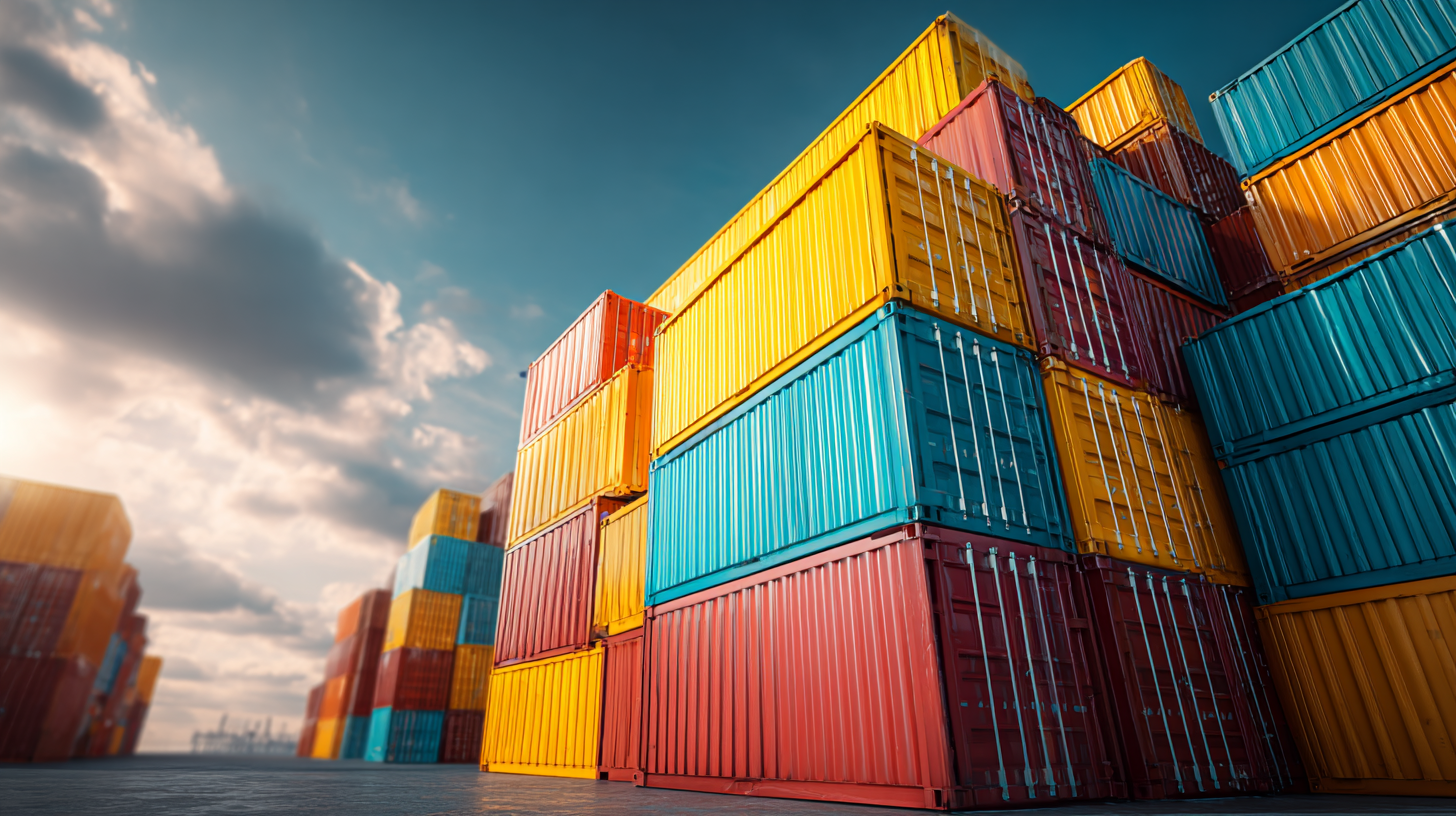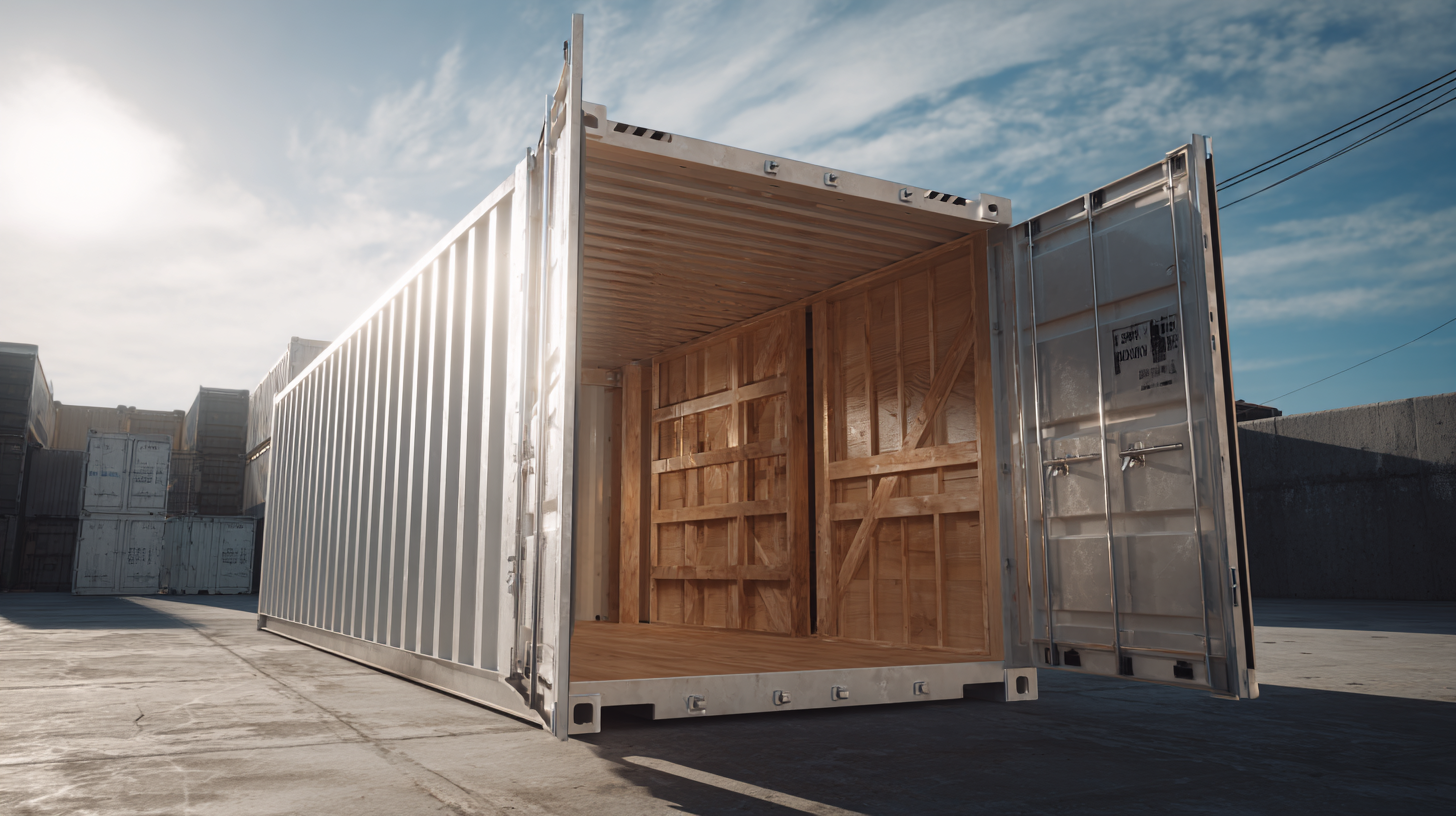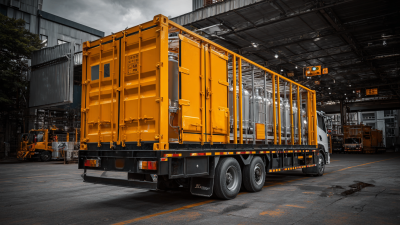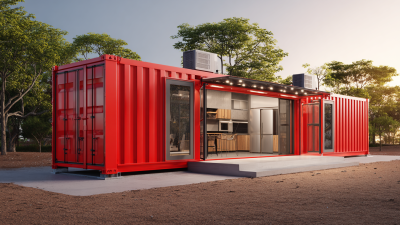Unlocking the Potential of Shipping Containers: Sustainable Solutions for Modern Logistics
 The global logistics industry is on the verge of a transformation, driven by the burgeoning need for sustainable practices and innovative solutions. As of 2021, the shipping container market was valued at approximately $9.3 billion and is projected to grow substantially, reaching over $12 billion by 2026, according to industry reports. This growth signals a pivotal opportunity to leverage shipping containers not only for transportation but also as sustainable building blocks in various sectors.
The global logistics industry is on the verge of a transformation, driven by the burgeoning need for sustainable practices and innovative solutions. As of 2021, the shipping container market was valued at approximately $9.3 billion and is projected to grow substantially, reaching over $12 billion by 2026, according to industry reports. This growth signals a pivotal opportunity to leverage shipping containers not only for transportation but also as sustainable building blocks in various sectors.
With the rise of urbanization and e-commerce, the demand for innovative logistics solutions has never been more critical. The adaptability of shipping containers offers a versatile framework for reducing carbon footprints and promoting circular economy practices. From modular housing to eco-friendly storage solutions, the potential applications are vast and varied, positioning shipping containers at the forefront of modern logistics sustainability initiatives.
Embracing these possibilities might not only enhance operational efficiency but also redefine how industries approach environmental challenges.
Innovative Uses of Shipping Containers in Sustainable Urban Development
Shipping containers are transforming urban development with their innovative and sustainable applications, particularly in vertical farming initiatives. As urban areas face challenges linked to climate change and food security, vertical farms utilizing shipping containers are emerging as a viable solution. These high-tech, climate-controlled systems allow cities to grow fresh produce locally, significantly reducing transportation costs and emissions associated with long-distance food supply chains. For instance, the global vertical farming market is projected to reach $12.77 billion by 2026, highlighting the demand for space-efficient agricultural solutions amid rising urban populations.
Additionally, shipping container architecture promotes sustainability in urban habitats. The repurposing of these containers into eco-friendly housing and commercial spaces aligns with global sustainable development goals, supporting adaptive reuse and decreasing waste. Cities like Chicago are exploring how these structures can facilitate pop-up retail spaces, affordable housing, and community-driven projects, contributing to vibrant and resilient urban landscapes.
Tips:
1. Consider integrating shipping containers into existing urban frameworks. They can be a cost-effective solution for various community needs, from food production to housing.
2. Leverage local partnerships to enhance the functionality of shipping container projects, ensuring they serve the neighborhoods effectively and sustainably.
The Role of Shipping Containers in Reducing Carbon Footprint in Logistics
 Shipping containers have emerged as a crucial element in modern logistics, playing a pivotal role in reducing the carbon footprint associated with transportation and storage. According to a report by the International Maritime Organization (IMO), shipping is responsible for approximately 2.89% of global greenhouse gas emissions. Utilizing standardized shipping containers allows for more efficient loading and unloading processes, which can significantly reduce the energy consumption of freight transport. By maximizing the load capacity of vessels, companies can minimize the number of trips required, thereby lowering overall emissions.
Shipping containers have emerged as a crucial element in modern logistics, playing a pivotal role in reducing the carbon footprint associated with transportation and storage. According to a report by the International Maritime Organization (IMO), shipping is responsible for approximately 2.89% of global greenhouse gas emissions. Utilizing standardized shipping containers allows for more efficient loading and unloading processes, which can significantly reduce the energy consumption of freight transport. By maximizing the load capacity of vessels, companies can minimize the number of trips required, thereby lowering overall emissions.
Furthermore, the adaptation of shipping containers for multifunctional uses—such as modular buildings, pop-up shops, and even housing—demonstrates their versatility and sustainability potential. The Global Maritime Forum reported that innovations in container reuse can lead to a 20-30% reduction in waste produced in the supply chain. By reimagining how these containers are utilized, businesses not only decrease their environmental impact but also promote a circular economy, where resources are kept in use for as long as possible. This strategic approach underscores the important role that shipping containers can play in creating a more sustainable logistics framework, ultimately leading to a greener future for global trade.
Economic Benefits of Modular Container Structures in Supply Chain Management
The integration of modular container structures into supply chain management offers a multitude of economic benefits, particularly in the face of growing global complexities. As shipping containers can be repurposed and used flexibly across various logistical functions, they significantly reduce costs associated with infrastructure and transportation. This adaptability allows companies to optimize their operations, enabling faster response times and improved efficiency amid emerging risks, such as increasing tariffs and potential strikes that could impact logistics in 2025.
Moreover, the use of modular containers can enhance the resilience of supply chains, particularly when navigating geopolitical tensions and market fluctuations. By providing a scalable and efficient solution, these structures enable businesses to better manage their resources and mitigate disruptions caused by unforeseen circumstances, such as changes in global trade policies or the impacts of the Suez Canal security issues. Therefore, investing in modular container technologies not only promotes sustainability but also strategically positions companies to thrive in an increasingly unpredictable economic environment.

Adoption Rates and Industry Impact of Container-Based Solutions in Transportation
The adoption of shipping container-based solutions in transportation has witnessed significant growth, driven by the need for sustainability and efficiency in logistics. According to a 2022 study by Allied Market Research, the global container logistics market is projected to grow from $4.32 billion in 2021 to $9.54 billion by 2030, representing a compound annual growth rate (CAGR) of 9.35%. This surge reflects the increasing recognition of containers as an efficient means for not just goods transportation but also for modular and eco-friendly supply chain solutions.
Moreover, the industry is seeing a shift towards innovative container modifications. The World Economic Forum reports that around 30% of shipping companies are now integrating smart technology into container operations to enhance traceability and reduce waste. For instance, the implementation of IoT-enabled containers allows real-time tracking of cargo conditions and locations, thereby improving operational efficiency and decreasing carbon footprints. As more logistics companies embrace these container-based solutions, the sustainability impact is likely to become more pronounced, aligning with global goals for reduced greenhouse gas emissions in the transportation sector.
Unlocking the Potential of Shipping Containers: Sustainable Solutions for Modern Logistics - Adoption Rates and Industry Impact of Container-Based Solutions in Transportation
| Dimension | 2018 | 2019 | 2020 | 2021 | 2022 |
|---|---|---|---|---|---|
| Global Adoption Rate (%) | 15 | 22 | 30 | 40 | 55 |
| Reduction in Carbon Emissions (%) | 5 | 7 | 10 | 12 | 15 |
| Increase in Cost Efficiency (%) | 10 | 12 | 15 | 18 | 25 |
| Container Utilization Rate (%) | 60 | 62 | 65 | 68 | 72 |
| Investment in Container Solutions (USD millions) | 500 | 700 | 900 | 1100 | 1500 |
Case Studies: Successful Implementation of Containers in Eco-Friendly Warehousing
Shipping containers have transformed modern logistics not only by enhancing efficiency but also by offering sustainable solutions. Case studies from various companies illustrate how repurposing shipping containers has led to eco-friendly warehousing practices. One prominent example is a major retailer that converted decommissioned shipping containers into modular storage units. These units are not only cost-effective but also reduce the carbon footprint associated with traditional building materials. By using containers, businesses can create scalable and mobile warehouses that meet fluctuating demand while minimizing environmental impact.
Another instance involves a logistics provider that utilized shipping containers in an urban distribution center. This approach allowed for the consolidation of operations within city limits, significantly cutting transportation emissions. The ability to stack and transport containers efficiently means that multiple layers of logistics can operate in a smaller footprint, reducing land use and resource consumption. By investing in shipping containers, these organizations are not just optimizing their supply chains; they are also setting a precedent for sustainable practices in the logistics industry.
Unlocking the Potential of Shipping Containers: Sustainable Solutions for Modern Logistics
This chart illustrates the percentage of various applications of shipping containers in eco-friendly warehousing, showcasing their significant role in sustainable logistics.
Related Posts
-

Exploring the Versatility of Storage Shipping Containers for Home and Business Solutions
-

Exploring Innovative Uses for Construction Containers in Modern Architecture
-

Exploring the Benefits of Container Trailers for Efficient Transportation Solutions
-

Transform Your Space: Innovative Uses for Storage Shipping Containers in Urban Living
-

The Ultimate Guide to Choosing the Right Movers Containers for Your Next Move
-

The Rise of Construction Containers Revolutionizing the Building Industry Amidst Sustainability Demands
